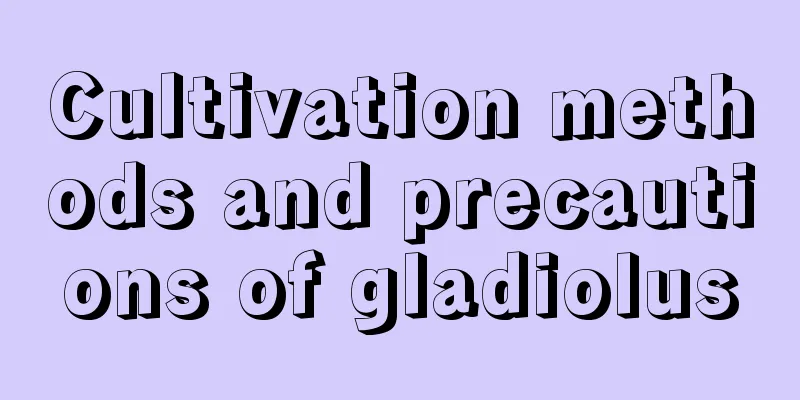Cultivation methods and precautions of gladiolus

1. Maintenance methods1. Temperature: The most suitable temperature for gladiolus is 20 to 25 degrees. Within this range, it is more suitable for flowering and growth. Because of its excellent high temperature resistance, it generally does not need to be adjusted in summer. However, it has poor cold resistance, so it needs to be adjusted in winter, and it is best to keep the temperature above ten degrees. 2. Light: It is a light-loving plant and a long-day plant. Therefore, you must place it in a well-lit area to ensure its growth and abundant flowering. However, when encountering strong light in the summer, appropriate shielding is also needed. 3. Watering: It needs more water during the growth period. When growing rapidly, keep it slightly moist. When it is very hot in summer, you can water it once a day. In winter, do the opposite and control water as much as possible. 4. Soil: It has high requirements on soil, including the amount of nutrition, drainage and air permeability. Using sandy soil will give better results. 2. Breeding techniques1. Reproduction: Mainly by bulb division. It is most suitable in spring. Pick a disease-free, lush bulb, then prepare a sharp knife and cut it into pieces. Each part must have a place where a heel can grow. After cutting, apply some wood ash on it. Then dry them and you can plant them. 2. Repotting: Since it has relatively high requirements for soil quality, it is best to repot once a year. If the soil is not caked, it can be replaced every two years. Sandy soil can also be used as a new substrate. If conditions permit, some basal fertilizer can also be added. 3. Problem diagnosis and treatment1. Disease: There may be "Penicillium mold rot". To prevent this disease, soak the seeds in potassium permanganate solution before planting. 2. Pests: The most common pests are "nematodes". When spraying pesticides, the soil must also be disinfected. In addition, there is the "green beetle", both its adults and larvae are harmful. You can use pesticides and apply some fertilizer in moderation. IV. Other issues1. Flower language: There are many flower language explanations. However, overall it is positive. For example, there is "love", "longevity", "happiness and fortune", etc. 2. Can it be kept at home: Yes. It is highly ornamental and has good meaning. |
<<: The cultivation methods and precautions of Frost Chao
Recommend
Flower language and plant culture of daylily
The Flower Language of Daylily The flower languag...
How to plant Dendrobium officinale?
Dendrobium officinale is a perennial epiphytic he...
Cultivation methods and precautions of Dieffenbachia
1. Soil To grow evergreen, you can mix humus, for...
Does Dieffenbachia bloom?
1. Whether it blooms Dieffenbachia is a foliage p...
When you use this “special water” to grow jade plants, their branches and trunks will grow rapidly and they will become “old stumps” in less than a year!
It is said that the material for making this &quo...
Methods of propagation of waxwood
1. Time Selection Cutting is a method of reproduc...
How to water hibiscus
Watering frequency During the growth period of hi...
The best plants to repel mosquitoes
1. Mosquito repellent grass Mosquito repellent gr...
Common pests of Huayuejin and their control methods
Common pests of Huayuejin: scale insects The dama...
How to water daisies
Tips for watering daisies Daisy, also known as ho...
How to Graft Christmas Cacti
1. Time of grafting The time for grafting can be ...
What should I do if Xiuyan grows too tall?
What does Soo-yeon look like? It is a common phen...
Kirin Palm soil changing time and method
Kirin Palm soil replacement time It is generally ...
How often should I water the tiger thorn plum?
1. Spring and Autumn The climatic conditions in d...
How to grow air plants
1. Temperature When maintaining it, please note t...









